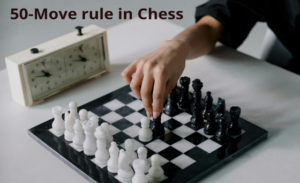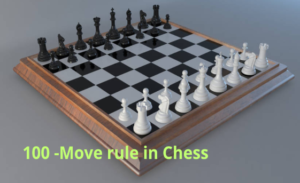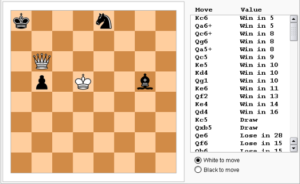Is There a 100-Move Rule in Chess?
Chess is a classic and traditional game with all sorts of rules to it. These rules have developed over the centuries. These include how to set up the chessboard, guidelines for fair play, and more complex strategies. While many chess enthusiasts and tournament followers are familiar with these rules, newcomers often find them confusing. One well-known rule is the 50-move rule: if 50 moves pass without a pawn being moved or a piece is captured, the game can be declared a draw. This raises the question: is there a 100-move rule in chess? In this blog, I’ll explore this question by explaining key chess rules and focusing on the endgame to determine if a 100-move rule exists.
Understanding the 50-Move rule in Chess
What is the 50-move rule?
The 50-move rule in chess states that a game can be declared a draw if, over the last 50 consecutive moves by each player, no pawn has been moved and no pieces have been captured. This rule prevents games from dragging on indefinitely when neither player is making progress toward winning, particularly in endgame situations where a checkmate seems unlikely.
Purpose of the Rule
The 50-move rule ensures that games end after 100 moves by both sides in situations where they could otherwise continue indefinitely. In certain endgames, like those involving just a knight, bishop, or light-squared bishop, it’s impossible to win without the opponent making a mistake (for example, king and knight versus king). The rule discourages these games from dragging on and pushes for a decisive result within a set number of moves.
Historical Context
The 50-move rule in chess has its roots in the 17th century when the game began formalizing its rules. Chess games could potentially continue indefinitely in certain endgame scenarios where no progress toward a checkmate was made. To address this, the 50-move rule was introduced to prevent endless games and ensure that players either secured a win or reached a draw within a reasonable number of moves. This rule was established to maintain the balance between competitive fairness and practical game duration. The 50-move rule was standardized in the 20th century by FIDE (International Chess Federation), and its application is now understood by all to be the same, wherever it is played.
The Myth of the 100-Move Rule
Origins of the Misconception
No historical evidence supports the idea of a 100-move rule in chess; this belief likely stems from confusion or misconceptions. It may arise from endgame situations where more than 50 moves are needed to checkmate or from more complex theoretical endgames, like those with two knights versus a pawn, which can require more than 50 moves to win.
Clarifying the Rules
There is no 100-move rule in the official chess rules. The standard is the 50-move rule in chess, which applies to all types of chess games—classical, rapid, and blitz. If you’re playing casually or in a non-competitive setting, you and your opponent can agree to continue past move 50. However, in official matches, you must adhere to the 50-move rule.
Common Endgame Exceptions
In some endgames, such as the two knights versus a pawn, it’s clear that more than 50 moves are needed to make progress. For these situations, including others like the zugzwang endgame, FIDE provides guidelines. For example, if players need more than 50 moves to demonstrate a forced mate without moving a pawn or capturing a piece, FIDE may allow the game to continue beyond 50 moves, up to move 63, to complete the demonstration. However, this is a guideline, not a separate rule like a 100-move rule.
The Role of Endgames in Chess Rules
Endgames That Test the 50-Move rule rule
Endgames often put the 50-move rule to the test. For example, a king and rook can typically force a draw against a king and bishop. However, if the bishop is in a very cramped position, the king and rook can secure a win, though it may require precise play and many moves. These endgames can be lengthy, so the 50-move rule might come into play. Nevertheless, it should still be possible to win within 50 moves.
Special Endgame Rules and Exceptions
Special endgame rules and exceptions include the 50-move rule in chess, which allows a player to claim a draw if neither side has made a pawn move or capture in the last 50 moves. The threefold repetition rule also lets a player claim a draw if the same position occurs three times with the same player to move. Stalemate results in a draw when a player has no legal moves and is not in check. The “insufficient material” rule declares a draw if neither player has enough material to checkmate the opponent, such as in king versus king or king and bishop versus king scenarios. Some pawn endgames involve exceptions like underpromotion, where a pawn is promoted to a piece other than a queen to avoid stalemate or achieve a better position.
Implications for Competitive Play
Understanding endgame rules is crucial in competitive chess, as players must consider how the 50-move rule in chess will impact their strategy in complex endgames. For instance, a draw can be claimed after 50 moves without a capture or pawn move, which may push players to play more aggressively earlier in the game. They also need to recognize that while some endgames are theoretically winnable, achieving victory within the rules may be challenging in practice.
Why the 50-Move Rule Is Sufficient
Balancing Fairness and Practicality
The 50-move rule strikes a balance between fairness and pragmatism. It draws a line between the duration of a game and the time within which a player should have a fair chance of winning. However, lengthening it to a 100-move rule would see more games drilling out to potentially disastrous lengths. This could well reduce the appreciation for chess as a whole, especially in a competitive context.
Encouraging Skillful Play
The 50-move rule encourages skillful play by motivating players to focus on precision and efficiency in the endgame. Knowing they have a limited number of moves to secure a win, players must carefully plan their strategies, execute tactics with accuracy, and avoid wasting moves. This rule rewards those who can make the most of their opportunities, emphasizing the importance of foresight and mastery of endgame techniques. By imposing a time constraint, the 50-move rule challenges players to demonstrate their skill under pressure, making the endgame a true test of their chess abilities.
Preventing Stalemates
Without the 50-move rule, some games might never end, especially in positions where neither player can force a win but could continue playing indefinitely. In these situations, the resulting draw would be technically correct but wouldn’t accurately reflect the skill and effort involved. The 50-move rule ensures these games reach a timely conclusion, either as a draw or a stalemate, preventing endless play and maintaining the integrity of the competition.
Conclusion
The answer is no. Certain difficult endgames can take longer than 50 moves to play out, but the 50-move rule is the standard regulation on the length of endgames. It ensures a fair playing field and a timely conclusion to the game. While exceptional endgames are allowed to exceed the 50-move rule, the game hasn’t devised a way of allowing an indefinite number of moves without exceptions, such as with the hypothetical 100-move rule. For everyone who is interested in playing the game seriously, it is important to understand and apply the 50-move rule in chess since it affects strategy while successfully maintaining chess as the well-organized and respected game it is today.




